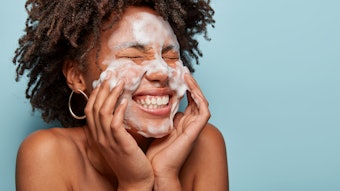
More recently, since the early 2000s, the Period After Opening (PAO) indicator became a requirement for most cosmetic products in the EU.1 The exceptions were single-use packaging, products whose packaging prevented contamination during use, or formulations that did not support microbial growth.
Log in to view the full article
More recently, since the early 2000s, the Period After Opening (PAO) indicator became a requirement for most cosmetic products in the EU.1 The exceptions were single-use packaging, products whose packaging prevented contamination during use, or formulations that did not support microbial growth.
The PAO indicator enhances consumer information by providing details about the stability of the cosmetic, as it indicates the period of time after opening that a product can be used without harmful effects. The fundamental aim was to guarantee cosmetic product safety based on scientific progress in safety matters pertaining to the lifetime of cosmetic products.
For cosmetics labeled in compliance with this EU regulation, it is easier to answer “is-it-still-safe-to-use?” questions by simply taking a look at the PAO. After all, the company that made the product should understand its longevity and effectiveness after it is opened.
The situation becomes more complicated if being asked about a sealed product purchased three to five years prior. If you can decipher the batch code, you may be able to figure out the date it was manufactured. However, some companies use an arbitrary batch code with a near indecipherable manufacturing date. Also, the nature of the product – e.g., water-based or mostly anhydrous; the packaging, etc., determine how long the product will keep.
A consumer looking for a quick answer via the internet would find that cosmetic products should not be used more than two to three years after manufacturing. This is likely shorter than it needs to be. There are websites allowing consumers to search for a product code to determine the date of manufacture.2 Such information should be more easily available to the consumer.
A Jar of Gefilte Fish
All of this came to mind as I was eating from a jar of gefilte fish. I looked at the bottom of the jar and the manufacturing date and “best before” date were clearly printed. To my surprise, the expiration date was four years after the manufacturing date. The label also stated that after opening, the jar should be refrigerated and the remaining part of the product should be consumed within two weeks.
Cosmetics can be used anywhere between a few months to one year or more after opening. This is typically determined by the manufacture and coincides with the PAO label.
Clearly, the differences in label dating are due to very different types of products. It is also true that the labeling on food products in terms of manufacture and expiration dates is regulated by the government for reasons related to public safety and to ensure the quality of food products.
Despite this, I wondered why the cosmetic industry was not providing the consumer with the same amount of information. Currently, the U.S. Food and Drug Administration, with a few exceptions, has no requirements for cosmetics to be labeled with either a manufacturing date, “best by” use date or PAO.3 Manufacturers are held responsible for making sure their products are safe.4
According to EU regulations, cosmetic products must display information about their shelf life if it does not exceed 30 months from the date of manufacture. However, this provides no information to the consumer about the shelf life of products with more than 30 months’ stability.5
The minimum shelf life indicates how long the product remains safe to use and retains its functionality and structure when stored correctly but this is not the product's expiration date. A product may therefore easily be used without any hazardous effects after this period has come to an end.
It can be argued that in the case of cosmetics, none of this information is vital for the safety of consumers. But should government regulations always be required for an industry to provide the consumer with information they might like to have? Should a cosmetic manufacturer not give customers information to ensure a product’s freshness and high satisfaction from use of the product?
Future Regulation in Cosmetics
I feel proud to say that our industry has been a leader in ethical and moral positions on many issues. These include biodiversity, the environment, supply chain ethics, etc., which can be summed up in the all-inclusive term of responsible beauty.5
I believe in informing the consumer about when their products were manufactured. The duration of time after manufacturing for the safe use of both opened and unopened products should be included as part of responsible beauty. As stated, many of these determinations will depend on the type of formulation, how the products are stored, the packaging, where and how they are used, etc., but who better than the manufacturer to supply the consumer with answers to these questions?
I have previously stated that cosmetic labels are already getting too long and complicated.6 However, this information can be added without further complicating labels. A simple and good place to begin would be with the batch code.
Since every product must have a batch code in the EU and products in the U.S often have one due to international marketers, the industry could agree upon a standardized code that conveys the month and year of manufacture and “best before” date. This would allow everyone who buys the product to see when the product is made and when it should be used by. If the company that made the gefilte fish can supply this information, so can the cosmetic industry.
Author’s note: The gefilte fish I ate was actually five months past the expiration date but I was hungry so I ate it anyway. I honestly cannot tell you if it affected the quality and taste because I usually drown it in the hottest, spiciest horseradish sauce I can buy.
References
1. Cosmetics Europe. (2011). Cosmetics Europe: Guidelines on cosmetic labeling. (2011). Available at https://cosmeticseurope.eu/files/8814/6407/5369/Guidelines_on_Cosmetic_Product_Labelling_-_2011.pdf
2. Check Fresh. (Accessed 2023, Aug 10). Check the date of manufacture of perfumes and cosmetics. Available at https://www.checkfresh.com/
3. U.S. Food and Drug Administration. (2022, Jun 6). Do I need to label my products with expiration dates? Available at https://www.fda.gov/industry/fda-basics-industry/do-i-need-label-my-products-expiration-dates
4. Daltion, D. and Procter, J. (2018, May 5). Minimum durability of cosmetic products and associated labeling. Available at https://www.europarl.europa.eu/doceo/document/E-8-2018-002682_EN.html
5. P&G. (Accessed 2023, Aug 10). Responsible beauty. Available at https://us.pg.com/responsible-https://us.pg.com/responsible-beauty//
6. Laden, K. (2019, Jun 3). Why we should shorten cosmetic ingredient labeling. Available at https://www.cosmeticsandtoiletries.com/regulations/claims-labeling/article/21837294/why-we-should-shorten-cosmetic-ingredient-labeling










